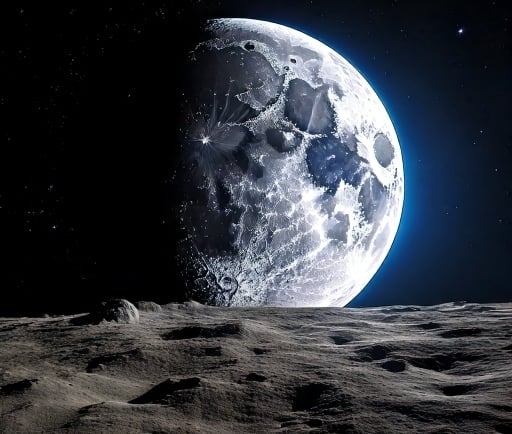Illuminating The Lunar Maria Glow


Understanding the Lunar Maria
The lunar maria, or 'seas' as they are commonly referred to, represent some of the most fascinating features of the moon's surface. Formed by ancient volcanic activity, these dark, basaltic plains are not only a geological wonder but also a subject of intrigue for astronomers and space enthusiasts. Their appearance varies depending on the lighting and position of the moon, revealing intricate details that can captivate observers.
The Rare Phenomenon of the Lunar Glow
As the sun sets on the moon, a rare, faint glow can often be observed along the lunar terminator, the line that divides the sunlit and shadowed portions of the moon. This phenomenon is particularly intriguing because it occurs at a time when many celestial bodies are cloaked in darkness. The source of this radiant glow is attributed to electrostatic changes in the lunar dust that cover the maria.
Electrostatic Changes and Their Effects
When the sunlight strikes the lunar surface, it triggers a series of electrostatic processes in the fine particles of lunar dust. These processes can lead to the emission of light in the form of a faint glow, which tends to be more pronounced in the maria due to their unique characteristics. Observers often describe this light as a soft shimmer that enhances the beauty of the moon during its phases.
The study of this faint glow not only deepens our understanding of the lunar surface but also raises questions about the electrostatic behaviors of dust in other celestial environments. The implications of such phenomena may extend beyond the moon, offering insights into the surface conditions of asteroids and other planetary bodies.
In conclusion, the lunar maria's rare glow is a captivating natural spectacle that enriches our appreciation of the moon. Through continued observation and study, we can unlock further understanding of these enigmatic features, providing a glimpse into the intricate dynamics of our celestial neighbor. The moon, with its breathtaking maria and their ethereal glow, remains an inspiring subject for both professionals and amateur astronomers alike.
